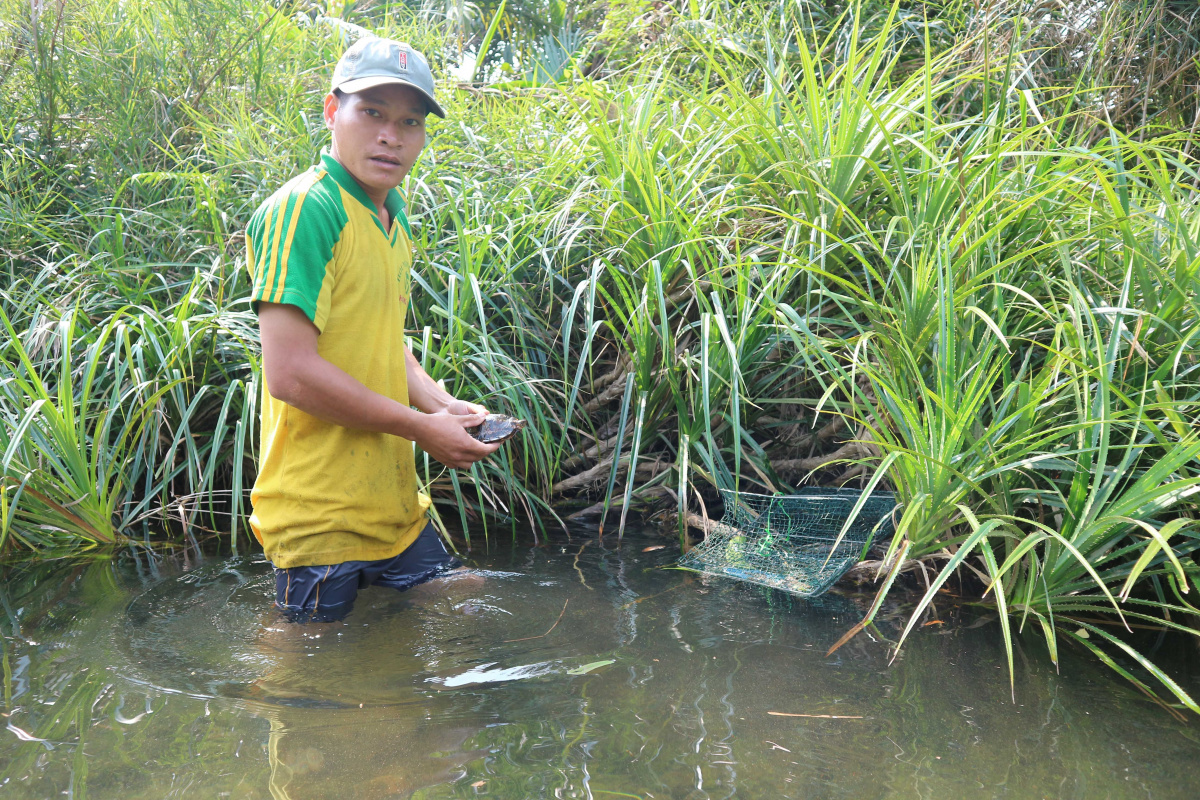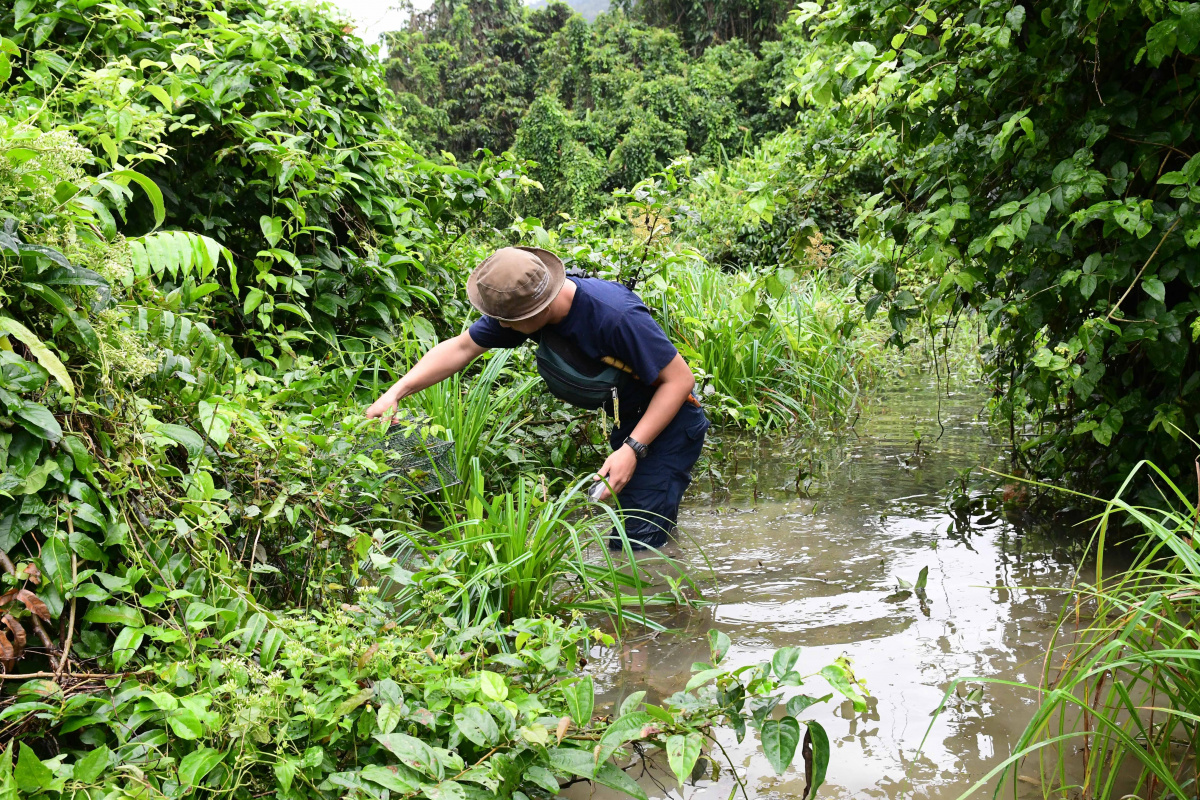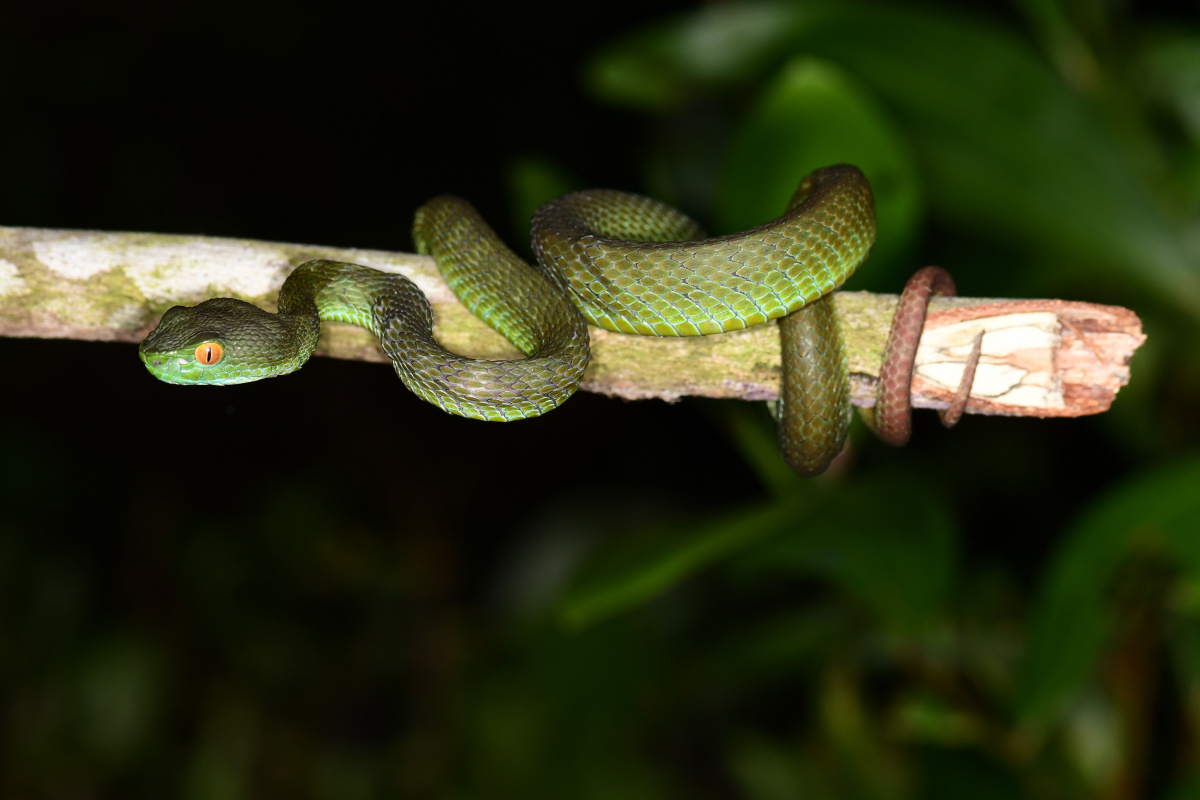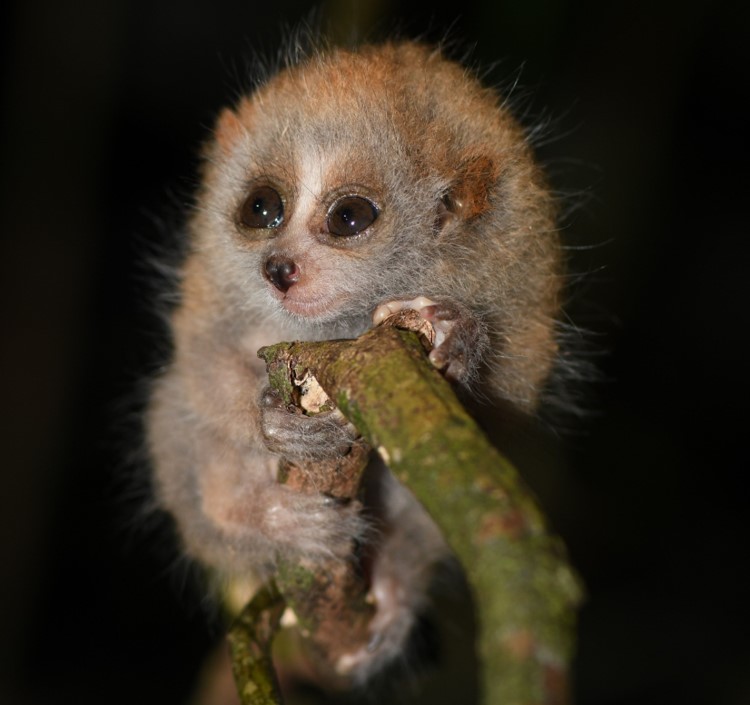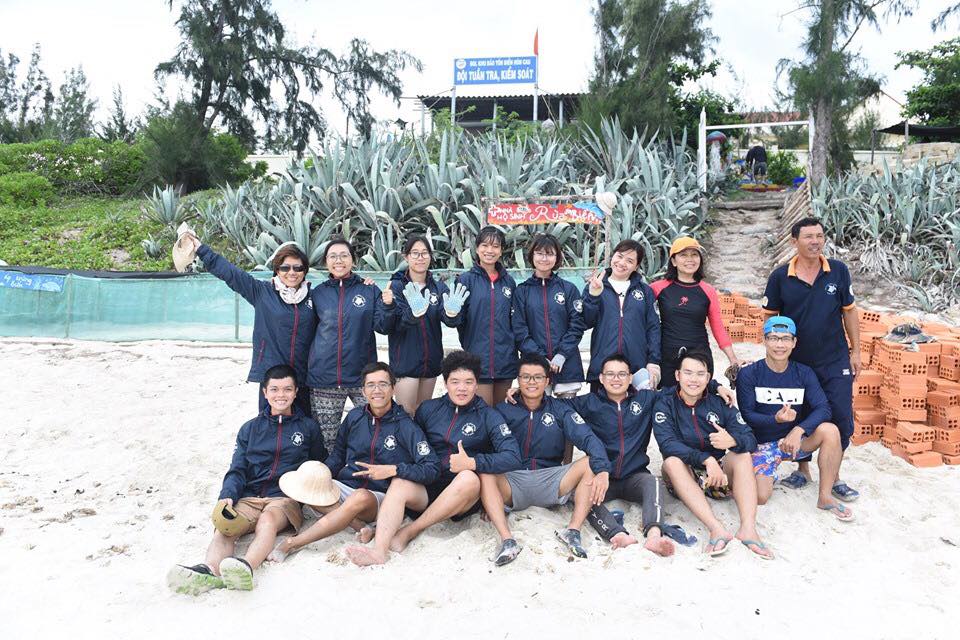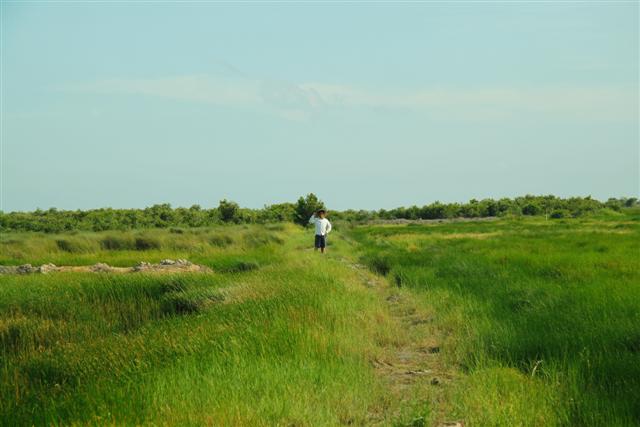New biodiversity survey highlights the species diversity of Ca Forest, Central Vietnam
In March 2021, the Asian Turtle Program conducted a two-week biodiversity survey in Ca Forest, Viet Nam. The study, supported by IUCN’s Mekong WET project, focused on tortoises and freshwater turtles, but also covered other amphibians, reptiles, mammals, and birds in the wetland. The results will be used to highlight the biodiversity and importance of the Ca Forest and support a movement to upgrade the level of protection given to the area.
The Asian Turtle Program team conducted the two-week survey in the swamps and streams alongside Ca Forest in Tay Hoa and Song Hinh, Phu Yen Province. While the main focus of the survey was tortoises and freshwater turtles (TFT), researchers also studied other amphibians, reptiles, mammals and birds. During the survey, 70 non-lethal aquatic traps were placed in two priority sites to search for TFT, and 30 camera traps were installed in the forest to find mammals. At night, researchers conducted transect surveys to find amphibians and reptiles.
One eastern black-bridged leaf turtle (Cyclemys pulchristriata), was caught during the survey. It was measured and documented before being released back to the capture location. A total of 70 species of birds were observed and photographed and 60 species of amphibians and reptiles were recorded. Of the species recorded, many are listed in the Vietnam Red Data Book, including Tokay geckos (Gekko gekko) – Vulnerable, forest toads (Ingerophrynus galeatus) – Vulnerable, and Oriental rat snakes (Ptyas mucosa) – Endangered. Two species, the eastern black-bridged leaf turtle (Cyclemys pulchristriata) and the Oriental rat snake (Ptyas mucosa) are protected under Vietnam’s principal wildlife law, Decree 06/2019/ND-CP and Appendix II of CITES.
In addition, researchers observed and photographed six (6) individuals of Bengal slow loris (Nycticebus bengalensis), including two (2) juveniles. These individuals were found in the evergreen forest within Ca Forest.
Ca Forest is located on the northeastern part of Langbian Plateau within Phu Yen, Khanh Hoa, and Dak Lak provinces in central Viet Nam. This is the only known location of the endemic and critically endangered southern Vietnamese box turtle (Cuora picturata). This area also harbours a variety of rare flora and fauna species, with new species being discovered and described every year. Almost all areas in Ca Forest are Watershed Protection Forests, a low protection level in Viet Nam (the highest level is National Park, followed by Nature Reserve).
Since 2012, the Asian Turtle Program of Indo-Myanmar Conservation has been working with local partners, including the Southern Institute of Ecology and the Leibniz Institute for Zoo and Wildlife Research to conserve tortoise and freshwater turtle species in the area. Ten field surveys have been conducted to understand the importance of Ca Forest's diversity.
The findings of the surveys will be used to highlight the diversity and importance of Ca Forest area and support the upgrading of the protection level of the area.
The Mekong WET Small Grants fund several wetlands projects in the Indo-Burma region. These initiatives are directly answering specific climate threats to wetland ecosystems, species, and communities using Ecosystem-based Adaptation strategies as the main approach.
About MWET
Funded by the International Climate Initiative (IKI) of the German Federal Ministry for the Environment, Nature Conservation, Building and Nuclear Safety (BMUB), the “Mekong WET: Building Resilience of Wetlands in the Lower Mekong Region” project aims to build climate resilience by harnessing the benefits of wetlands in Cambodia, Lao PDR, Thailand, and Viet Nam.
Mekong WET will help the four countries to address their commitments to the Ramsar Convention, an international treaty for the conservation and sustainable use of wetlands, and to achieve the Aichi Biodiversity Targets.
About IBRRI
The Indo-Burma Ramsar Regional Initiative (IBRRI) was jointly developed by the Ramsar National Focal Points of the five countries (Cambodia, Lao PDR, Myanmar, Thailand, and Viet Nam), and IUCN’s Asia Regional Office, based on specific needs identified in these countries. It was endorsed by the 52nd meeting of the Ramsar Convention Standing Committee in June 2016. The IBRRI aims to support the coordinated implementation of the objectives of the Strategic Plan of the Ramsar Convention. IUCN acts as the Secretariat for the Initiative under the leadership of the Steering Committee, which includes representatives from the five governments and the Ramsar Convention Secretariat as an observer.
